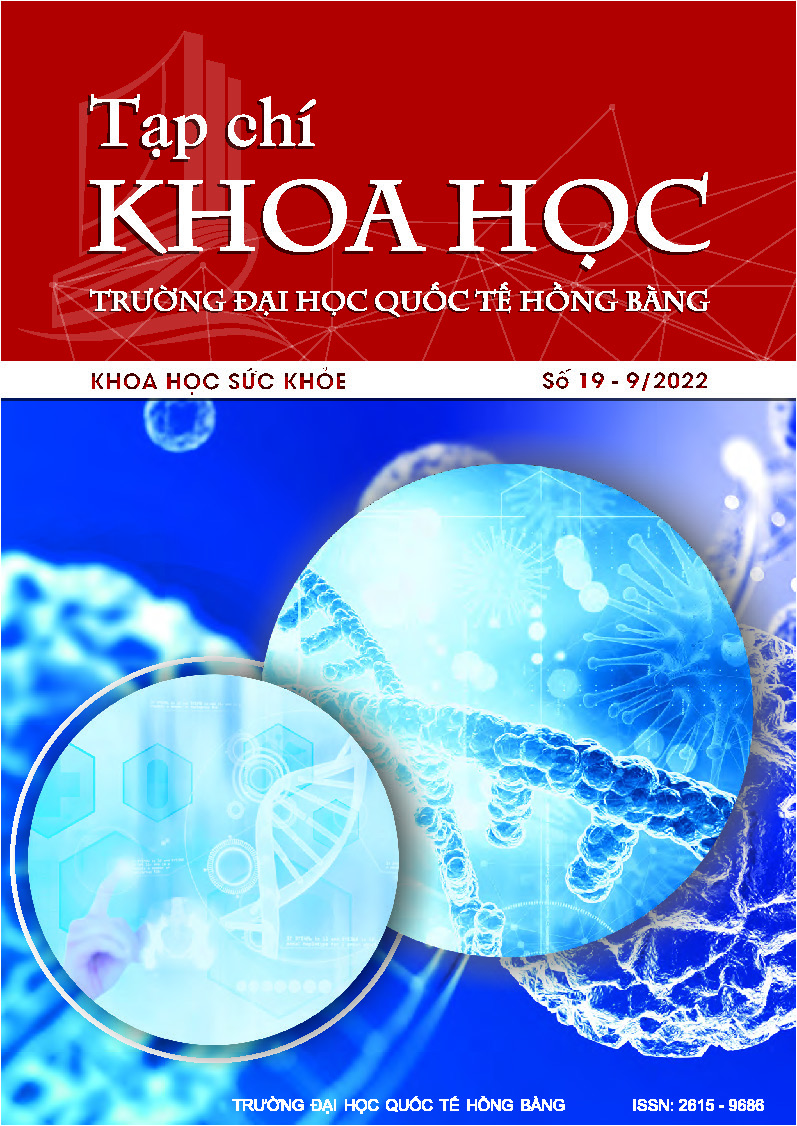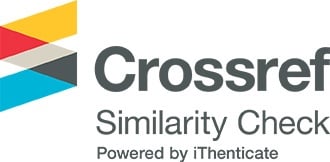Tổng quan dấu ấn sinh học mới MR-proANP trong suy tim cấp
Các tác giả
Từ khóa:
MR-proANP, suy tim cấp, chẩn đoán, tiên lượngTóm tắt
Suy tim cấp là một hội chứng lâm sàng phức tạp, tiên lượng tử vong cao nếu không chẩn đoán nhanh chóng. Ngày nay, với sự phát triển của kỹ thuật xét nghiệm, người ta có thể định lượng được vùng giữa của đoạn tiền hormone peptide lợi niệu từ tâm nhĩ, có tên gọi là MR-proANP (Mid-regional pro Atrial Natriuretic Peptide). Dấu ấn sinh học này có ý nghĩa trong chẩn đoán tiên lượng, điều trị bệnh nhân suy tim cấp và đã được giới thiệu tại các hội nghị lớn trên thế giới như Hiệp hội Tim mạch châu Âu (ESC), Hội Tim mạch Hoa Kỳ (AHA). Bài tổng quan của chúng tôi muốn đề cập một cách khái quát về dấu ấn sinh học này.
Abstract
Acute heart failure is complicated syndrome, with high mortality unless exactly diagnose. Today, advanced technology in laboratory, a fragment of mid pro-hormone from atrium is detected in circulation, namely MR-proANP, played important role in diagnosis, prognosis heart failure patients and has been introduced at major conferences around the world such as the European Society of Cardiology (ESC), the American Heart Association (AHA). This overview, we will show some basic contents about this cardiac biomarker.
Tài liệu tham khảo
[1] B. Casserly, R. Read, M. M. Levy, “Hemodynamic Monitoring in Sepsis,” Crit Care Clin, (25), pp. 803-823, 2009. DOI: 10.1016/j.ccc.2009.08.006
[2] Đ. V. Phước, “Suy tim trong thực hành lâm sàng,” Thành phố Hồ Chí Minh: Nhà xuất bản Đại học Quốc Gia, tr. 15 - 62, 2014.
[3] L. X. Trường, “Những xét nghiệm hóa sinh hiện đại sử dụng trong lâm sàng,” Thành phố Hồ Chí Minh: Nhà xuất bản Y học, chi nhánh TP. Hồ Chí Minh, 2015.
[4] N. Proudfoot, “The end of the message,” Nature, (298), pp. 516-517, 1982.
[5] A. J. de Bold, H. B. Borenstein, A. T. Veress, H. Sonnenberg, “A rapid and potent natriuretic response to intravenous injection of atrial myocardial extract in rats,” in Life Sci, pp. 89 - 94, 1991. DOI: 10.1016/0024-3205(81)90370-2
[6] D. Westermann, D. Lindner, M. Kasner, C. Zietsch, K. Savvatis, F. Escher, J. V. Schlippenbach, C. Skurk, P. Steendijk, A. Riad, W. Poller, H. P Schultheiss, C. Tschope, “Cardiac inflammation contributes to changes in the extracellular matrix in patients with heart failure and normal ejection fraction,” Circ Heart Fail, (4), pp. 44-52, 2011. DOI: 10.1161/CIRCHEARTFAILURE.109.931451
[7] A. Mosterd, B. Cost, A. W. Hoes, M. C. de Bruijne, J. W. Deckers, A. Hofman, D. E. Grobbee, “The prognosis of heart failure in the general population. The Rotterdam Study,” Eur Heart J, pp. 1318 - 1327, 2001. DOI: 10.1053/euhj.2000.2533
[8] G. Thibault, F. Amiri, R. Garcia, “Regulation of natriuretic peptide secretion by the heart,” Annu Rev Physiol, pp. 193 - 217, 1999. DOI: 10.1146/annurev.physiol.61.1.193
[9] D. L. Kasper, S. L. Hauser, J. L. Jameson, “Chapter 279. Heart Failure: Pathophysiology and Diagnosis," In: Harrison's Principles of Internal Medicine, Mc-Graw-Hill Companies, Inc, 19th. Edition, pp. 1500, 2015.
[10] H. Ruskoaho, “Atrial natriuretic peptides: synthesis, release and metabolism,” Pharmacol Rev, pp. 497 - 602, 1992.
[11] R. E. Lang, H. Tholken, D. Ganten, F. C. Luft, H. Ruskoaho, Th. Unger, “Atrial natriuretic factor-a circulating hormone stimulated by volume loading,” Nature, pp. 264 - 266, 1985.
[12] H. Roskoaho, H. Tholken, R. E. Lamg, “Increase in atrial pressure releases atrial natriuretic peptide from isolated perfused rat hearts,” Pfluegers Arch, pp. 170 - 174, 1986. DOI: 10.1007/BF00580671
[13] P. Kinnunen, O. Vuolteenaho, P. Uusimaa, H. Ruskoaho, “Passive mechanical stretch releases atrial natriureic peptide from rat ventricular myocardium,” Cir Res, pp. 1244 - 1253, 1992. DOI: 10.1161/01.res.70.6.1244
[14] H. Ruskaoho, P. Kinnunen, T. Taskinen, O. Vuolteenaho, J. Leppaluoto, T. E. Takala, “Regulation of ventricular of ventricular atrial natriuretic peptide release in hypertrophied rat myocardium. Effects of exercise,” Circulation, pp. 390 - 400, 1989. DOI: 10.1161/01.CIR.80.2.390
[15] A. J. de Bold, B. G. Bruneau, M. L. K. de Bold, “Mechanical and neuroendocrine regulation of the endocrine heart,” Cardiovasc Res, pp. 7 - 18, 1996.
[16] G. Thibault, M. Nemer, J. Drouin, J. P. Lavigne, J. Ding, C. Charbonneau, R. Garcia, J. Genest, G. Jasmin, M. Sole, “Ventricles as a major site of atrial natriuretic factor synthesis and release in cardiomyopathic hamsters with heart failure,” Cir Res, pp. 71 - 82, 1989. DOI: 10.1161/01.RES.65.1.71
[17] H. Yasue, K. Obata, K. Okumura, M. Kurose, H. Ogawa, K. Matsuyama, M. Joigasaki, Y. Saito, K. Nakao, H. Imura, “Increased secretion of atrial natriuretic polypeptide from the left ventricle in patients with dilated cardiomyopathy,” J Clin Invest, pp. 46 - 51, 1989. DOI: 10.1172/JCI113883
[18] H. Mangat and A. J. de Bold, “Stretch - induced atrial natruretic factor release utilizers a rapidly depleting pool of newly synthesized hormone,” Endocrinology, pp. 1398 - 1403, 1993. DOI: 10.1210/endo.133.3.8365374
[19] C. C. Lang, A. M. Choy, K. Turner, R. Tobin, W. Coutie, A. D. Struthers, “The effect of intravenous saline loading on plasma levels of brain natriureic peptide in man,” J Hypertens, pp. 737 - 741, 1993. DOI: 10.1097/00004872-199307000-00009
[20] A. M. Richards, G. Crozier, E. A. Espiner, T. G. Yandle, M. G. Nicholls, “Plasma brain natriuretic peptide and endopeptidase 24.11 inhibition in hypertension,” Hypertension, pp. 231 - 236, 1993. DOI: 10.1161/01.HYP.22.2.231
[21] A. J. de Bold, K. K. Ma, Y. Zhang, M. L. de Bold, M. Bensimon, A. Khoshbaten, “The physiological modulation of the endocrine function of the heart,” Can J Physiol Pharmacol, pp. 705 - 714, 2001.
[22] B. G. Bruneau, L. A. Piazza, A. J. de Bold, “BNP gene expression is specifically modulated by stretch and ET-1 in a new model of isolated rat atria,” Am J Physiol, pp. 2678 - 2686, 1997. DOI: 10.1152/ajpheart.1997.273.6.H2678
[23] H. Leskinen H, O. Voulteenaho, H. Ruskoaho, “Combined inhibitionon endothelin and angiotensin II receptor block volume load-induced cardiac hormonerelease,” Cir Res, pp. 114 - 123, 1997. DOI: 10.1161/01.res.80.1.114
[24] T. Ogawa, W. Linz, M. Stevenson, B. G. Bruneau, M. L. K. de Bold, J. H. Chen, H. Eid, B. A. Scholkens, A. J. de Bold, “Evidence for load-dependent and load-independent determinants of cardiac natriuretic peptide production,” Circulation, pp. 2059 - 2067, 1996. DOI: 10.1161/01.cir.93.11.2059
[25] H. Ruskaoho, H. Leskinen, J. Magga, P. Taskinen, P. Mantymaa, O. Vuolteenaho, J. Leppaluoto, “Mechanism of mechanical load-induced atrial natriuretic peptide secretion: role of endothelin, nitric oxide and angiotensin II,” J Mol Med, pp. 876 - 885, 1997. DOI: 10.1007/s001090050179
[26] F. Ichinose, E. S. Buys, T. G. Neilan, E. M. Furutani, J. G. Morgan, D. S. Jassal, A. R. Graveline, R. J. Searles, C. C. Lim, M. Kaneki, M. H. Picard, M. Scherrer-Crosbie, S. Janssens, R. Liao, K. D. Bloch, “Cardio-myocyte-specific overexpression of nitric oxide synthase 3 prevents myocardial dysfunction in murine models of septic shock,” Circ Res, (100), pp. 130-139, 2007. DOI: 10.1161/01.RES.0000253888.09574.7a
[27] S. S. Gottlieb, M. L. Kukin, D. Ahern, M. Packer, “Prognostic importance of atrial natriuretic peptide in patients with chronic heart failure,” J Am Coll Cardial, pp. 1334 - 1339, 1989. DOI: 10.1016/0735-1097(89)90344-6
[28] J. Mair, A. Hammerer-Lercher, B. Puschendorf, “The impact of cardiac natriuretic peptide determination on the diagnosis and management of heart failure,” Clinical Chemistry & Laboratory Medicine, pp 571 - 588, 2001. DOI: 10.1515/CCLM.2001.093
[29] J. A. Smith, D. Bruusgaard, E. Bodd, C. Hall, “Relations between medical history, clinical findings and plasma N-terminal proatrial natriuretic peptide in patients in primary health care,” European Journal of Heart Failure, pp. 307 - 313, 2001. DOI: 10.1016/s1388-9842(01)00124-6
[30] A. Maisel, C. Mueller, R. Nowak, W. F. Peacock, J. W. Landsberg, P. Ponikowski, M. Mockel, C. Hogan, A. H. B. Wu, M. Richards, P. Clopton, G. S. Filippatos, S. D. Somma, I. Anand, L. Ng, L. B. Daniels, S. X. Neath, R. Christenson, M. Potocki, J. McCord, G. Terracciano, D. Kremastinos, O. Hartmann, S. V. Haehling, A. Bergmann, N. G. Morgenthaler, S. D. Anker, “Mid-region pro-hormone markers for diagnosis and prognosis in acute dyspnea: results from the BACH (Biomarkersin Acute Heart Failure) trial,” J Am Coll Cardiol (55), pp. 2062-2076, 2010. DOI: 10.1016/j.jacc.2010.02.025
[31] Yang Chen, Zheqi Wen, Long Peng, Xing Liu, Yanting Luo, Bingyuan Wu & Suhua Li, “Diagnostic value of MR-proANP for heart failure in patients with acute dyspnea: A meta-analysis”, Acta Cardiologica, pp 68-74, 2020. DOI: 10.1080/00015385.2018.1550887
[32] T. Omland, V. V. Bonarjee, R. T. Lie, K. Caidahl, “Neurohormoral measurements as indicators of long-term prognosis after acute myocardio infarction,” Am J Cardiol, pp. 230 - 235, 1995. DOI: 10.1016/s0002-9149(99)80071 - x.
[33] K. M Davis, L. C. Fish, D. Elahi, B. A. Clark, K. L. Minaker, “Atrial natriuretic peptide levels in the prediction of congestive heart failure risk in frail elderly,” JAMA, pp. 2625 - 2629, 1992. [34] N. G. Morgenthaler, J. Struck, B. Thomas, A. Bergmann, “Immunometric assay for the mid regional of pro-atrial natriuretic peptide in human plasma,” Clinical Chem, (50), pp. 234 - 236, 2004. DOI: 10.1373/clinchem.2003.021204
[35] C Zelenak, M.L Chavanon, E. Tahirovic, “Early NT-proBNP and MR-proANP associated with QoL 1 year after acutely decompensated heart failure: secondary analysis from the MOLITOR trial”, Biomark. Med, 13(17), pp.1493 - 1507, 2019.
[36] B. M. Y. Cheung and C. R. Kumana, “Natriuretic peptides - revelance in cardiac disease”, JAMA. pp. 1983 - 1984, 1998. DOI:10.1001/jama.280.23.1983
[37] S.V.Haehling, E.A.Jankowska,N.G.Morgenthaler,… S.D.Anker, “Comparison of Midregional Pro-Atrial Natriuretic Peptide With N-Terminal Pro-B-Type Natriuretic Peptide in Predicting Survival in Patients With Chronic Heart Failure”, Journal of the American College of Cardiology, Vol.50, No.20, pp.1973 - 1980, 2007. DOI:10.1016/j.jacc.2007.08.012
[38] Zekun Feng, Olumuyiwa P. Akỉnimisi, Jeffrey A.Gornbein, Quynh A. Truong, Saumyadas, Jagmeet P.Singh, Olujimiajijola, “Combination Biomarkers for Risk Stratification in Patients With Chronic Heart Failure Biomarkers Prog-nostication in HF”, Journal of Cardiac Failure, 2021, DOI: 10.1016/j.cardfail.2021.05.028
[39] L. B. Daniels, P. Clopton, M. Potocki, J. McCord, M. Richards, O. Hartmann, I. S. Anand, A. H. B. Wu, R. Nowak, W. F. Peacock, P. Ponikowski, M. Mockel, C. Hogan, G. S. Filippatos, S. D. Somma, L. Ng, S. X. Neath, R. Christenson, N. G. Morgenthaler, S. D. Anker, A. S. Maisel, “Influence of age, race, sex, and body mass index on interpretation of midregional pro atrial natriuretic peptide for the diagnosis of acute heart failure: results from the BACH multinational study,” European Journal of Heart Failure, 14, pp. 22-31, 2012. DOI: 10.1093/eurjhf/hfr157
[40] N. G. Morgenthaler, J. Struck, B. Thomas, A. Bergmann, “Immunoluminometric assay for the midregion of pro-atrial natriuretic peptide in human plasma,” Clinical Chem, 50, pp. 234 - 236, 2004. DOI:10.1373/clinchem.2003.021204
Tải xuống
Tải xuống: 158







